The Blum Center for Developing Economies is excited to celebrate the 10th anniversary of the Big Ideas Contest!
 The Rudd Family Foundation Big Ideas Contest offers students an opportunity to turn their ideas into action. This year saw the largest number of applications in the contest’s history with over 750 graduate and undergraduate students from across 16 schools submitted 266 proposals. On April 27, top teams will pitch their innovative projects to a panel of esteemed judges representing the US Agency for International Development, the Autodesk Foundation, and several Big Ideas winners from the past decade, for an opportunity to receive additional seed funding for their ideas.
The Rudd Family Foundation Big Ideas Contest offers students an opportunity to turn their ideas into action. This year saw the largest number of applications in the contest’s history with over 750 graduate and undergraduate students from across 16 schools submitted 266 proposals. On April 27, top teams will pitch their innovative projects to a panel of esteemed judges representing the US Agency for International Development, the Autodesk Foundation, and several Big Ideas winners from the past decade, for an opportunity to receive additional seed funding for their ideas.
Participating in the Big Ideas contest provides students with support and mentorship for developing their ideas. Since its launch in 2006, Big Ideas has received over 1,400 proposals, supported more than 5,000 students from 18 universities, and provided seed funding for participants that have gone on to secure over $80 million in additional funding. The Big Ideas contest is made possible through the generous support of the Rudd Family Foundation, as well as prize sponsors including UCOP’s Carbon Neutrality Initiative, the U.S. Global Development Lab, the All Children Reading Grand Challenge, the Global Center for Food System Innovations, the Center for Information Technology in the Interests of Society, the Berkeley Food Institute, and the Associated Students of the University of California.
 Among the students competing this year’s Grand Prize Pitch Day is Skylar Economy, a senior at UC Berkeley’s Department of Film & Media. Economy is the team lead of From Incarceration to Education Film and Resource Connection, which aims to produce a documentary film as well as provide resources to combat recidivism among formerly incarcerated people.
Among the students competing this year’s Grand Prize Pitch Day is Skylar Economy, a senior at UC Berkeley’s Department of Film & Media. Economy is the team lead of From Incarceration to Education Film and Resource Connection, which aims to produce a documentary film as well as provide resources to combat recidivism among formerly incarcerated people.
Economy says,”When we were in the very beginning stages of talking about producing a larger-scale documentary project about formerly incarcerated students, this goal seemed far-fetched and frankly unattainable as a student. Applying to Big Ideas was quite possibly the best choice we could have made in order to make this project a reality. We have grown so much through goal-setting, proposal writing, mentorship, and guidance. I’m so thankful to have been selected as a finalist and first place project in the Art & Social Change category, because I now know that we really can have a positive impact on people’s lives—and on the world around us.”
Economy’s project represents just one of the diverse topics that will be covered in the fifth annual Big Ideas Grand Prize Pitch Day. Teams are tackling issues as wide-ranging as addressing mental health issues on the Berkeley campus, developing a carbon-negative soil conditioner for East African farmers, and creating an open-source, affordable genetic test for HIV in Mexico.
The Grand Prize Pitch Day, which is open to the campus community and the public, will be held on April 27, 5:00 pm-8:00 pm, in B100 Blum Hall. (RSVP requested). At this exciting event, contestants will deliver three-minute pitches followed by a question and answer session with the judges and the audience. While the judges deliberate, attendees will be able to network with students and prominent leaders from various Bay Area industries. Audience members will also have the opportunity to learn about all the ideas in this year’s contest and vote for their favorites through the “Big Vote” feature of the event. Food and drinks will be served during the evening, and the Grand Prize winners will be announced at 8:00 pm. Please join us at this inspiring event to cheer on your favorite Big Idea and celebrate the accomplishments of all the finalists!
On May 4, Big Ideas will be holding its annual Awards Celebration, open to the public, from 5-8pm in B100 Blum Hall. This event brings together the entire Big Ideas community to mark the conclusion of the 2015-2016 contest. This year represents the 10th Anniversary of the Big Ideas Contest and will include a demo session with past winners, a poster session featuring the this year’s award winning projects and plenty of opportunities for attendees to network and learn. RSVP requested
2016 Pitch Day Contestants:
Campus and Community Impact Pitch Round
FITE Film (From Incarceration to Education) and Resource Connection (UC Berkeley) – This project is focused on the production of a documentary film that will combat recidivism in the prison system by motivating currently incarcerated individuals to seek higher education and mentorship opportunities. The creation of a structured resource connection will provide assistance to incarcerated individuals seeking to attain higher education.
LiftEd (UC Berkeley) – LiftEd is an iPad application that enables special education professionals to measure students’ academic & behavioral performance on individualized learning goals, analyze learning trends to modify instruction and intervention methods real-time, and ultimately share student progress with districts & parents on-demand.
SafeSpace (UC Berkeley) – Poor mental health is a widespread issue plaguing college students across the country. SafeSpace is a website and mobile application for UC Berkeley undergraduates to comfortably share their similar mental health issues; it is an anonymous, peer-led chat.
Global Impact Pitch Round
Dost: A Mobile Platform to Promote Parent Engagement (UC Berkeley) – Dost, or “Friend” in multiple languages, is a mobile platform that helps low-income parents in developing countries engage in their child’s education from day one. Dost is unique because it delivers action-oriented content to functionally illiterate moms through the technology already in their hands.
Open Viral Load (UC San Diego) – The Open Viral Load project aims to develop an open-source, affordable genetic assay test for HIV that can be easily modified to test other pathogenic diseases, such as tuberculosis and the Zika virus. This project will allow low resource communities to receive the regular testing they need in order to know the status of their viral disease or to quickly diagnose patients with other pathogenic illnesses.
Safi Organics (Massachusetts Institute of Technology) – Safi Organics provides a carbon-negative soil conditioner for rural farmers who suffer from long-term crop loss due to soil degradation. Their product, Safi Sarvi, provides the essential nutrients and a biochar-based stabilizer that leads to a 30% increase in crop yield and 50% increase in income.
For additional information:
(510) 666-9120
bigideas@berkeley.edu





 For many student innovators, Big Ideas has served as the first step in turning a grand hunch into a viable proposal. Last year, Amelia Phillips and her Big Ideas team won the first place award in the Conflict & Development category for the
For many student innovators, Big Ideas has served as the first step in turning a grand hunch into a viable proposal. Last year, Amelia Phillips and her Big Ideas team won the first place award in the Conflict & Development category for the 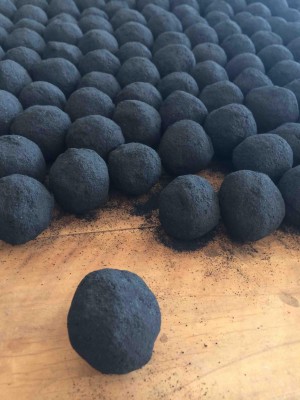
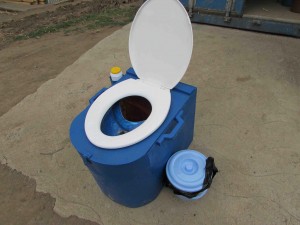
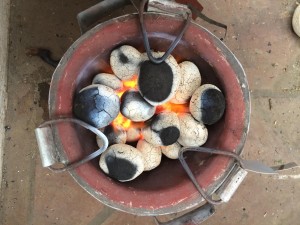
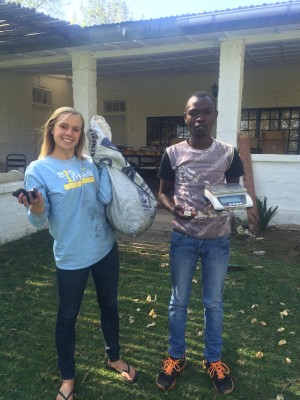
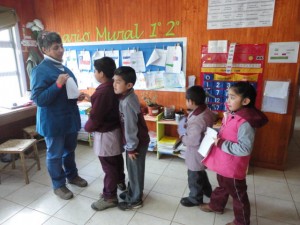 “The conflict between the Chilean state and Mapuche people has been in place for 500 years,” said Madero. “My question was: How is it possible that this problem is still there?”
“The conflict between the Chilean state and Mapuche people has been in place for 500 years,” said Madero. “My question was: How is it possible that this problem is still there?”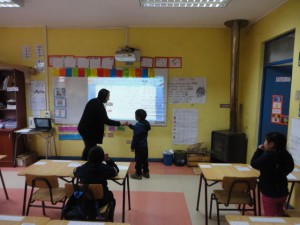 “I developed relationships with two families that made me realize how the Mapuche people are treated and received,” said Madero in response to why he started develop his educational program. “That’s one side of the answer. It was personal.”
“I developed relationships with two families that made me realize how the Mapuche people are treated and received,” said Madero in response to why he started develop his educational program. “That’s one side of the answer. It was personal.”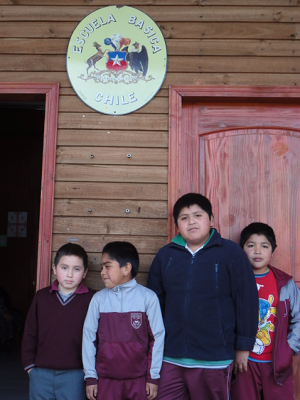 “Because of the power a teacher has in a classroom, we might be able to convey that the Mapuche are not lazy, drunk, dark people who don’t like to work and that’s why they’re all poor. All those categories students in wealthy schools receive, they’re reproduced and they don’t do anything to overcome this,” argued Madero. “Maybe a teacher can be a good mediator of change.”
“Because of the power a teacher has in a classroom, we might be able to convey that the Mapuche are not lazy, drunk, dark people who don’t like to work and that’s why they’re all poor. All those categories students in wealthy schools receive, they’re reproduced and they don’t do anything to overcome this,” argued Madero. “Maybe a teacher can be a good mediator of change.”